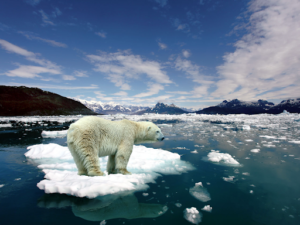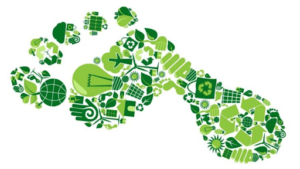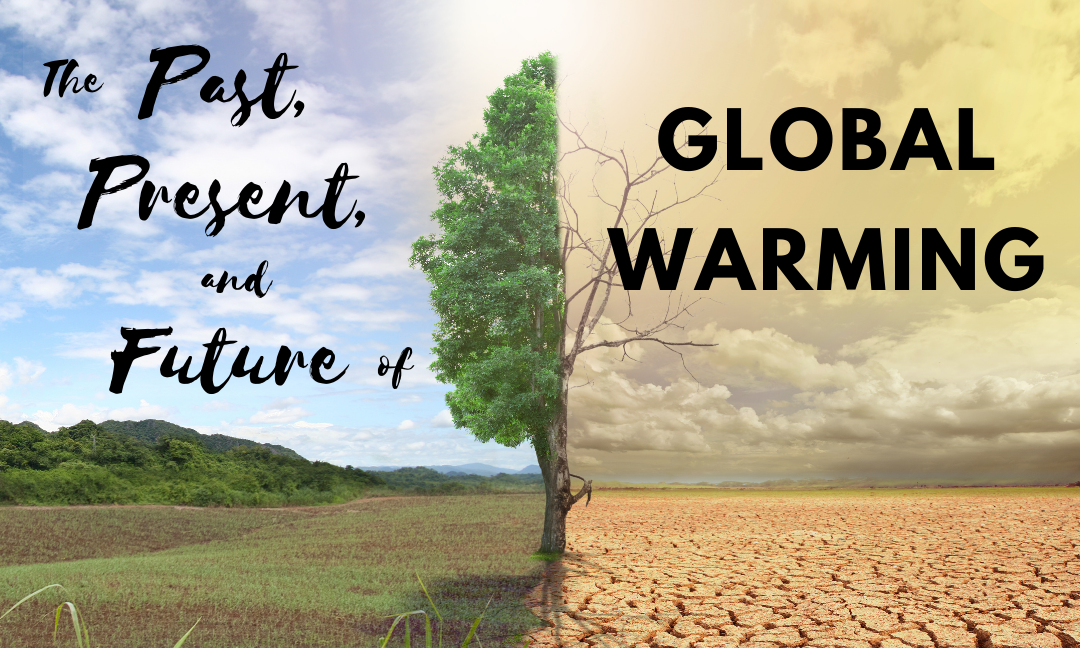Author: Rita Banyameen
Editor: Connor Fraser
Graphic Designer: Rayna Almas
Publisher: Kiya Tavascia
Climate change is no longer some far-off problem: it is happening here; it is happening now
 Discovery of Greenhouse Effect: Three years before John Tyndall, Eunice Foote (women on the left) appears to have been the first to figure out that the planet’s atmosphere absorbs heat from the sun and keeps the world warm and comfy. Eunice presents her scientific article that was the first to demonstrate carbon dioxide gas’s extraordinary ability to absorb heat – the main factor behind global warming. This work was submitted to the American Science Conference in 1855, but not by Eunice. It’s unclear why she didn’t present it as her own work. Even though some sources claim she was not allowed, it was tossed aside, and she did not obtain the acknowledgment or support that would have enabled her to continue her work. Later on, a researcher came across Eunice’s work in 2011, they had learnt that it was done three years before John and published her study.
Discovery of Greenhouse Effect: Three years before John Tyndall, Eunice Foote (women on the left) appears to have been the first to figure out that the planet’s atmosphere absorbs heat from the sun and keeps the world warm and comfy. Eunice presents her scientific article that was the first to demonstrate carbon dioxide gas’s extraordinary ability to absorb heat – the main factor behind global warming. This work was submitted to the American Science Conference in 1855, but not by Eunice. It’s unclear why she didn’t present it as her own work. Even though some sources claim she was not allowed, it was tossed aside, and she did not obtain the acknowledgment or support that would have enabled her to continue her work. Later on, a researcher came across Eunice’s work in 2011, they had learnt that it was done three years before John and published her study.
Past: Charles Keeling employed the most advanced methods available to construct atmospheric CO2 concentration curves in Antarctica and Mauna Loa in the late 1950s and early 1960s. These curves have become one of the most well-known indicators of climate change. From the 40s to the 70s, the graphs indicated a declining trend in world annual temperature. At the same time, investigations into ocean sediments revealed that there had been 32 cold-warm cycles in the last 2.5 million years, rather than just four. As a result, fears that a new ice age was approaching grew. In support of global cooling, the media and many scientists rejected scientific facts from the 1950s and 1960s.
Present: Between 1990 and 2019, human-caused greenhouse gas emissions grew by 2%. However, since 2005, greenhouse gas emissions have reduced by 12%. Carbon dioxide is responsible for most of the country’s emissions, as well as most of the rise since 1990. The main source of greenhouse gas emissions in Canada is transportation, followed by power generation. Emissions per person have reduced slightly in recent years, yet the situation remains dangerous.
 Future: As the climate warms, snow and ice melt, future temperatures are anticipated to shift even more! The melting of glaciers, ice sheets, and other snow and ice on land is expected to continue to be greater in the summer than the precipitation that falls in the winter, resulting in a reduction in the total amount of snow and ice. Mountain glaciers worldwide have shrunk over the next century, as has the Arctic permafrost. It is projected that the amount of sea ice floating in the Arctic Ocean would decrease. Climate change is complex. For example, warming in Canada is roughly double that of the rest of the world, owing to our northern location. As snow and sea ice melt, surfaces become less reflective, allowing more sunlight to get through, resulting in even more melting and warming. It’s a vicious circle.
Future: As the climate warms, snow and ice melt, future temperatures are anticipated to shift even more! The melting of glaciers, ice sheets, and other snow and ice on land is expected to continue to be greater in the summer than the precipitation that falls in the winter, resulting in a reduction in the total amount of snow and ice. Mountain glaciers worldwide have shrunk over the next century, as has the Arctic permafrost. It is projected that the amount of sea ice floating in the Arctic Ocean would decrease. Climate change is complex. For example, warming in Canada is roughly double that of the rest of the world, owing to our northern location. As snow and sea ice melt, surfaces become less reflective, allowing more sunlight to get through, resulting in even more melting and warming. It’s a vicious circle.
 Overall, looking into the past and future will enable us to better behave today and be more careful, but you may be wondering what I can do to assist. To begin, educate yourself about the situation so that you can raise awareness about it. You can also save energy by lowering your heating and cooling, switching to LED light bulbs and energy-efficient electric appliances, washing your laundry in cold water instead of using a dryer, and hanging things to dry instead of using a dryer. Another approach to reduce greenhouse gas emissions is to walk or ride a bike instead of driving. This will also benefit your health and fitness. Consider taking the train or bus for longer distances. Also, carpool wherever possible, and eat more vegetables, fruits, whole grains, legumes, nuts, and seeds while consuming less meat and dairy. This can have a big influence on the environment. Plant-based foods produce fewer greenhouse gas emissions and require less energy, land, and water to produce.
Overall, looking into the past and future will enable us to better behave today and be more careful, but you may be wondering what I can do to assist. To begin, educate yourself about the situation so that you can raise awareness about it. You can also save energy by lowering your heating and cooling, switching to LED light bulbs and energy-efficient electric appliances, washing your laundry in cold water instead of using a dryer, and hanging things to dry instead of using a dryer. Another approach to reduce greenhouse gas emissions is to walk or ride a bike instead of driving. This will also benefit your health and fitness. Consider taking the train or bus for longer distances. Also, carpool wherever possible, and eat more vegetables, fruits, whole grains, legumes, nuts, and seeds while consuming less meat and dairy. This can have a big influence on the environment. Plant-based foods produce fewer greenhouse gas emissions and require less energy, land, and water to produce.
Canada, N. R. (2019, April 2). Government of Canada. Natural Resources Canada. Retrieved January 23, 2022, from https://www.nrcan.gc.ca/simply-science/melting-glaciers-rising sea-levels-thawing-permafrost-and-unpredictable-groundwater-l/21842
Center for Science Education. Predictions of Future Global Climate | Center for Science Education. (n.d.). Retrieved January 23, 2022, from https://scied.ucar.edu/learning zone/climate-change-impacts/predictions-future-global-climate

